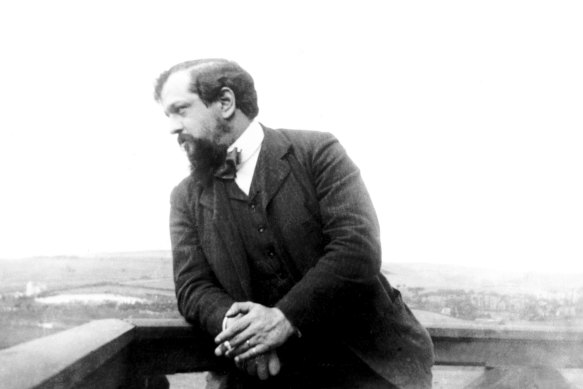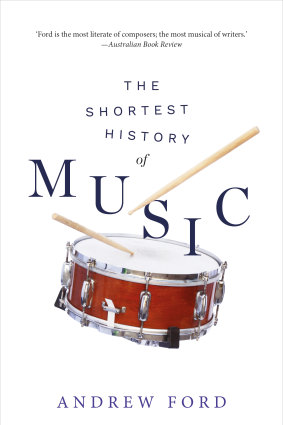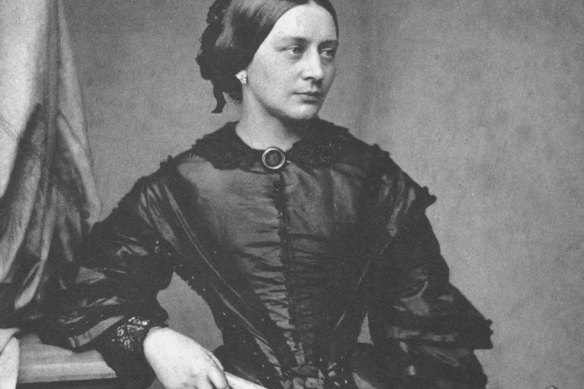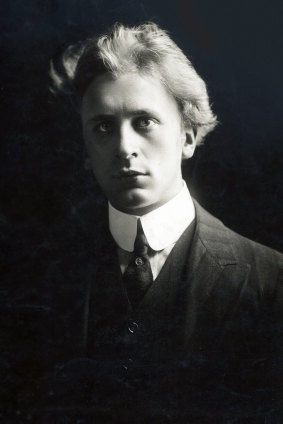MUSIC
The Shortest History of Music
Andrew Ford
Black Inc., $27.99
Music is the art of agony, wrote the eccentric Australian composer Percy Grainger. “Music is after all derived from screaming; it is not derived from laughing.”
Andrew Ford, who quotes Grainger in his entertaining and informative The Shortest History of Music, prefers the idea that music begins with the gurgles of a baby, “protomusic”, and the lullabies that croon a child to sleep. Music in this form, Ford speculates, might even predate speech.

Chairman Mao loathed the music of Claude Debussy (above) and had the conductor of the Shanghai Symphony shot.Credit: Alamy Stock Photo
In some form music is happening around us all the time, in every culture and place and, although it has long been used formally for ritual, religion and state occasions, it is mainly small-scale and domestic.

The book’s delight is its stream of asides and anecdotes.
What music is not, though this is often claimed, is a universal language. It is neither universal nor a language, Ford insists. It does not speak equally to all people, as ‘universal’ implies, it is generally culturally appreciated and, while it can generate emotion, it communicates nothing.
Ford wants to set out the breadth and importance of music in human experience but admits that historically, with nearly all the music in the world other than Western art music, we know little and have access to virtually none of it. Given this sizeable impediment, his speculations are very plausible.
Speech is music, and music is stylised song. So music may have begun with song, but Ford suspects the more likely origin is rhythm, perhaps from stone tools. The earliest instruments are bone flutes, dating back 40,000 years.
The book’s chief delight is its constant asides, tangents and anecdotes, which appear on almost every page. For example, classical musicians fared very poorly in the Chairman Mao’s cultural revolution, as he particularly loathed French composer Claude Debussy. Shanghai Symphony Orchestra conductor Lu Hongen was among those executed under Mao’s rule, and the next day his wife was invoiced for the bullet – a rather chilling tale.
We also learn that it was Queen Victoria who made Felix Mendelssohn admit he had published under his own name some of his sister Fanny’s songs. This was not theft but to protect her from the disgrace of being known as a female composer. When the queen chose to sing one of Fanny’s songs to him, Felix felt he had to confess. (Mind you, this was about the same time Robert Schumann’s wife, Clara, a gifted pianist, was busy inventing the public piano recital, including playing some of her own works.)
A third random example: jazz was too popular in Germany for the Nazis to ban it outright, but they placed comical restrictions on the amount of syncopation and swing, and banned scat and plucking the bass. “The rules around tempi were especially hazy: too slow, the music was deemed to be ‘Jewishly gloomy’; too fast, and it risked ‘negroid excess’.”

Clara Schumann pioneered the public piano recital.Credit: Franz Hanfstaengl
Because even the shortest history of music must traverse considerable ground, Ford divides the task into five chapters. They examine prehistorical and cross-cultural evidence; the extraordinary advance in ambition, complexity and accessibility brought by musical notation; music as a profession and a commodity (David was a musician before he became king of Israel 3000 years ago); the modernism so central to the 20th century, defined as the desire to “make it new”, which actually goes back nearly a millennium; and finally, the massive changes wrought by the invention of recording.
Musical notation dates back at least 3400 years to cuneiform writing on baked clay tablets in ancient Ugarit (the so-called Hurrian hymns), but we don’t really understand the language, the instructions or the instruments.

Percy Grainger said music was the art of agony.
The development of what became modern notation allowed Western art music to develop its unparalleled richness and complexity. Before 1570, Thomas Tallis composed a work for 40 voices of hitherto unimagined intricacy that would be inconceivable if not written down. “Each of the 40 performers has a unique part to sing,” Ford writes, “yet the individual lines continually join up with each other, making an evolving web of pitch connections.”
Like notation, recording changed everything, from preserving the remnants of ancient folk cultures to making the great works of the canon available to all.
Before recording, you could know a Beethoven symphony only from live concerts, an opportunity closed to many, or by a piano reduction of the score (ditto). In little over a century, we have moved from piano reductions to wax cylinders, to shellac (78s) and vinyl (LPs), to cassette tapes and compact discs, iPods and streaming.
This has enabled two opposite modes of listening, Ford observes – the first an intense encounter with music akin to study, the second background music that barely involves listening at all.
Interestingly, Ford waits until his epilogue rather than the introduction to ask, “What is music?” John Cage’s definition, “organised sound”, captures all that it might include but nothing of its importance. For me, though, the conclusion is expressed in the opening line of the book: “Music is as intrinsic to human life as the air that we breathe.”
The Booklist is a weekly newsletter for book lovers from books editor Jason Steger. Get it delivered every Friday.